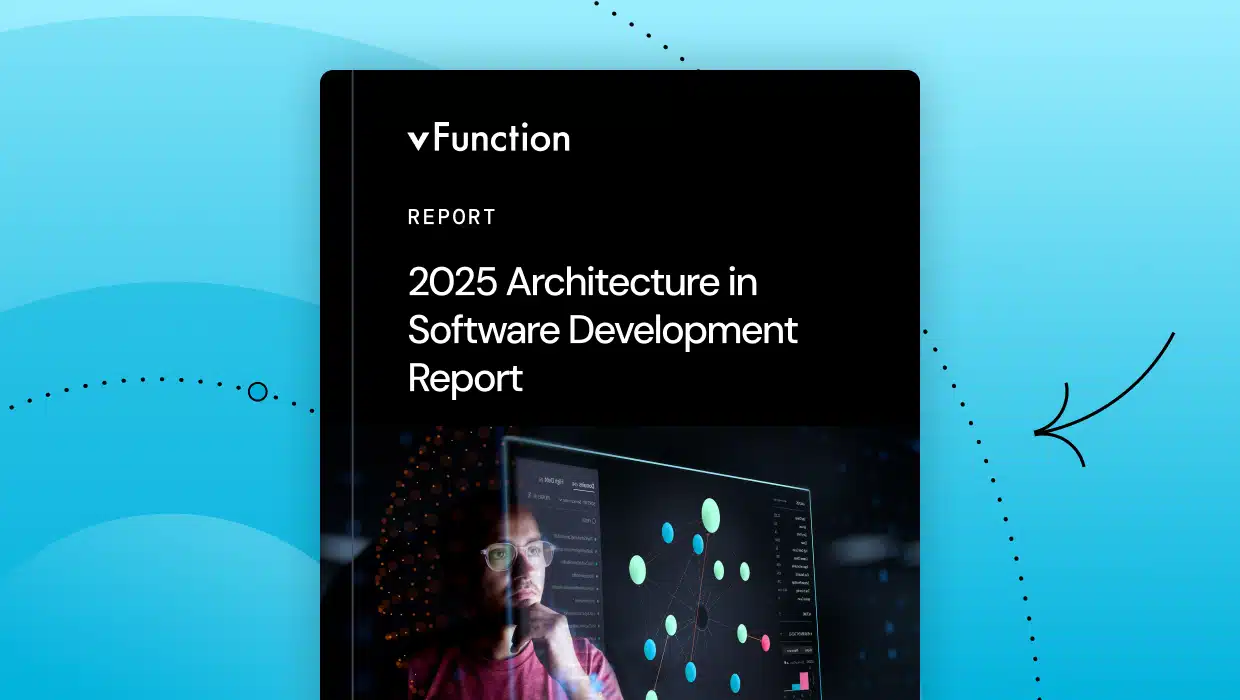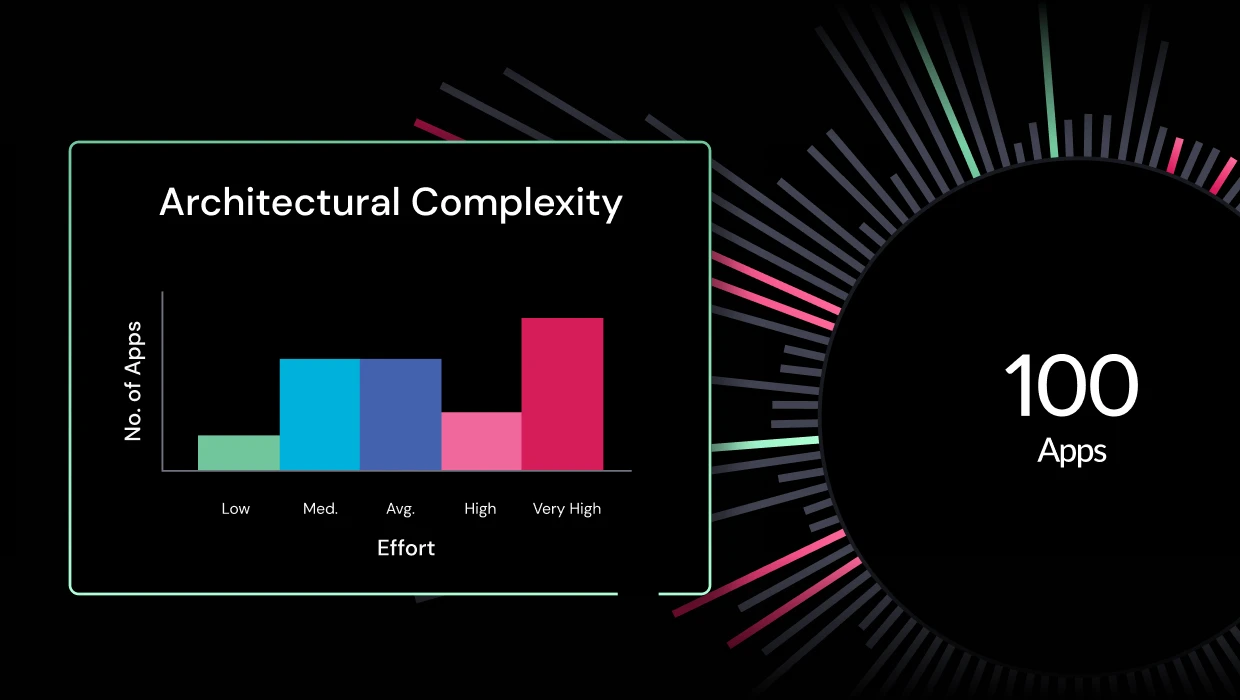If you’re an engineer or developer involved in microservices adoption or implementation, you know how they’ve reshaped software development by enhancing scalability, flexibility, and fault isolation. However, microservices come with their own set of complex challenges. In this blog, we will look into microservices anti-patterns, often the root cause of issues. These common mistakes can undermine your architecture and derail your projects, leading to significant frustration for the developers building and scaling the microservices. We’ll explore these anti-patterns, understand their consequences, and look at practical strategies to avoid them. First, let’s take a brief look at exactly what an anti-pattern is in regard to microservices.
What are microservices anti-patterns?
In software development, an anti-pattern refers to a frequently used solution that is ineffective or even detrimental. Anti-patterns in microservices typically arise from poor design choices or implementation flaws within a microservices architecture. These often stem from misunderstandings in microservices principles or hasty adoption without proper planning.
These anti-patterns can significantly impact a microservices application in several ways. Implementations endorsing anti-patterns can affect an application in one or many of these areas, including:
- Scalability: They can hinder your application’s ability to handle increased traffic and data volumes.
- Efficiency: Anti-patterns can lead to resource wastage and performance bottlenecks.
- Maintainability: They can make your codebase complex, difficult to understand, and challenging to modify.
- Performance: Poorly designed microservices can result in slow response times and decreased system reliability and user satisfaction.
The best way to avoid these anti-patterns is to recognize and address them early. Since you can’t prevent what you don’t know, the next logical step in our journey is to examine why teams implement these anti-patterns in the first place.
Why do anti-patterns in microservices occur?
Developers and architects don’t intentionally use anti-patterns. Microservice anti-patterns usually result from factors such as:
- Lack of understanding: Teams may adopt microservices without fully grasping the principles of loose coupling, independent deployments, and single responsibility.
- Lack of architecture governance: As applications evolve over time, gradual deviation of the application’s structure and underlying microservices can lead to unintended complexity, resulting in reduced resilience and higher amounts of technical debt.
- Rushing into implementation: Organizations may hastily migrate to microservices without proper planning and design, leading to poorly defined service boundaries and dependencies.
- Legacy systems: Integrating microservices with existing monolithic systems can create challenges and lead to anti-patterns if not handled carefully.
- Inadequate communication: Poor communication between teams working on different services can result in inconsistent data handling, tight coupling, and integration issues.
- Skill gaps: A lack of experience with distributed systems, asynchronous communication, and data management can contribute to design flaws.
- Ignoring organizational context: Microservices architectures need to align with the organization’s structure and culture. Ignoring this can lead to friction and inefficiencies.
Better education and planning can help organizations avoid anti-patterns. By understanding common microservices mistakes and how to prevent them, organizations can sidestep pitfalls and build cleaner, more scalable architectures. Let’s explore these issues, uncover why they occur, and offer practical prevention strategies.
Common microservices anti-patterns
Peter Drucker’s saying, “You can’t manage what you can’t measure,” rings true for identifying and addressing microservice anti-patterns. How can you steer clear of these issues if you’re unaware of what they are or the extent of their impact on your code? To close the knowledge gap, let’s examine some widespread microservices anti-patterns. Being aware of these is crucial for creating a robust microservices architecture. Here are 10 common ones to keep in mind:
1. Monolith in microservices
This anti-pattern occurs when your microservices are so tightly coupled and interdependent that they behave like a monolithic application. By neglecting service independence, you defeat the core benefit of adopting microservices in the first place.
Causes
- Inadequate service boundaries: Services may have overlapping responsibilities or handle too many functions.
- Excessive synchronous communication: Services rely heavily on synchronous calls, creating strong dependencies.
- Shared database: Multiple services directly access and modify the same database, leading to tight coupling.
Solutions
- Define clear service boundaries: Each service should have a specific, well-defined responsibility.
- Favor asynchronous communication: Utilize message queues or event-driven architectures to reduce dependencies.
- Implement separate data stores: Each service should own its data and expose it through APIs.
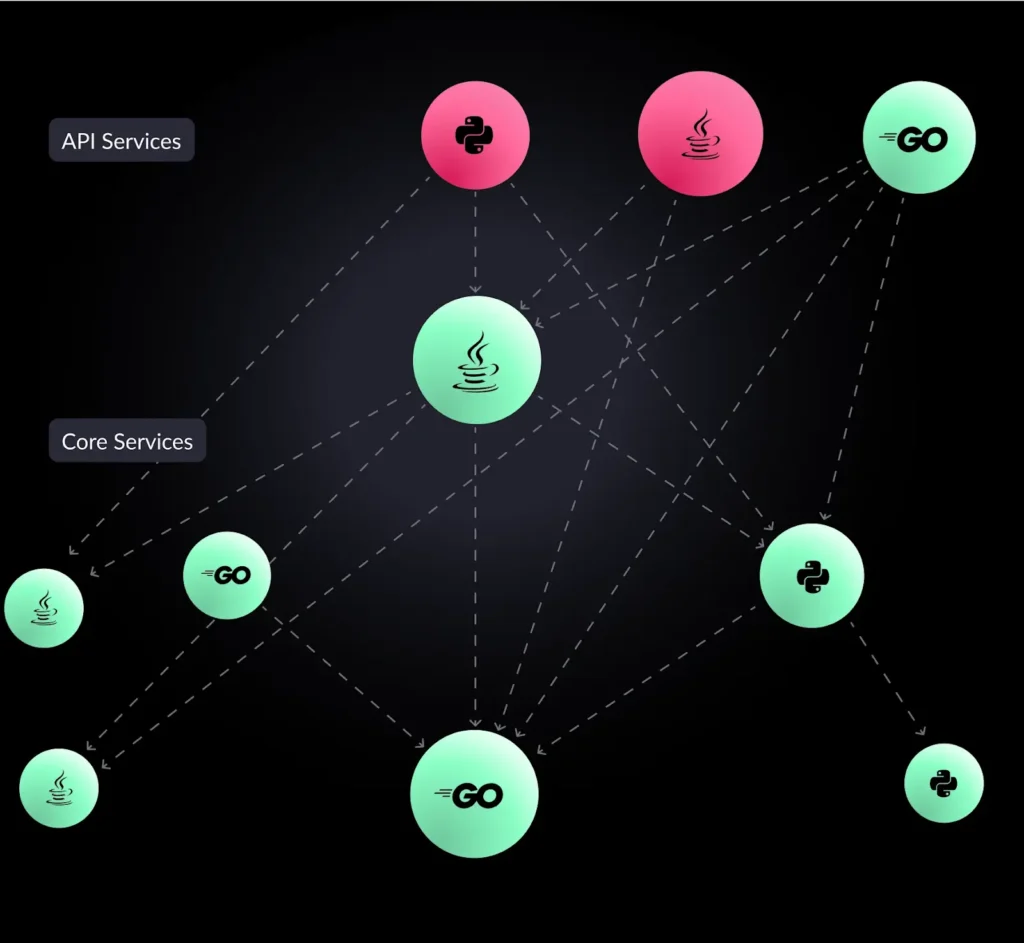
2. Chatty microservices
Having chatty services can undermine any distributed application. This type of behavior is even more detrimental when it comes to microservices. The anti-pattern of chatty microservices arises when microservices engage in excessive communication, leading to performance bottlenecks and increased latency. Chatty microservices erode the performance and scalability advantages of a microservices architecture.
Causes
- Fine-grained services: Decomposing services into excessively small units can increase communication overhead.
- Lack of data locality: Services frequently request data from other services instead of caching or replicating it.
- Synchronous communication overuse: Although needed in some scenarios, relying heavily on synchronous service calls can create chains of dependencies and delays.
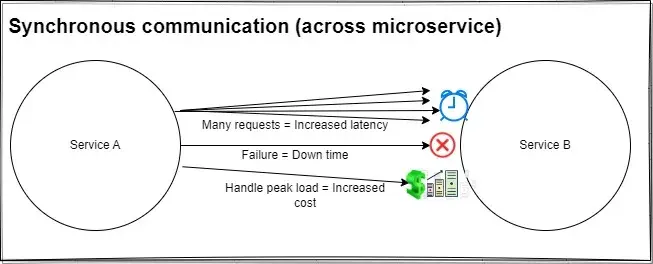
Solutions
- Right-size your services: Find the balance between granularity and communication efficiency.
- Promote data locality: Enable services to access the data they need locally whenever possible.
- Embrace asynchronous communication: Use message queues to decouple services and reduce blocking calls.
3. Distributed monolith
Piggy-backing on what we discussed earlier under the “monolith in microservices” section, this anti-pattern emerges when microservices are tightly coupled in their deployment and operation, effectively behaving as a distributed monolith. The beauty of microservices is their independence, which allows for ease of maintenance and scaling up.
Issues that arise
- Loss of independent deployments: Changes to one service require coordinated deployments of multiple services.
- Reduced fault isolation: Failures in one service can cascade and affect the entire system.
- Increased complexity: Managing and troubleshooting the system becomes more challenging.
Solutions
- Independent deployments: Ensure each service can be deployed independently without affecting others.
- Asynchronous communication: Reduce dependencies and enable loose coupling.
- Versioning and backward compatibility: Allow services to evolve independently while maintaining compatibility.
4. Over-microservices
There is no universal method for defining your microservices boundaries, offering substantial flexibility in their design. However, excessively decomposing an application into too many fine-grained microservices is a common misstep. While microservices aim to simplify complexity, over-fragmentation introduces new challenges, such as increased chattiness due to the need for more inter-service communication. This can negate the benefits of a microservices architecture. Proper “right-sizing” microservices boundaries and balancing granularity with usability and maintenance considerations are crucial.
Challenges
- Increased operational overhead: Managing a large number of services can become complex and resource-intensive.
- Higher communication costs: Excessive inter-service communication can lead to performance bottlenecks and increased latency.
- Debugging difficulties: Tracing issues across numerous services can be challenging.
Solutions
- Focus on business capabilities: Design services around core business functions rather than overly granular technical concerns.
- Consider team size and structure: Align service boundaries with team responsibilities to promote ownership and autonomy.
- Start with a coarser-grained approach: Begin with fewer, larger services and decompose them further only when necessary.
5. Violating single responsibility
The foundation of a microservices design heavily revolves around the single responsibility principle. A cornerstone of good design, this principle states that each service should have one specific responsibility. Violating this principle by lumping multiple responsibilities into a single service can lead to tight coupling and reduced maintainability.
Importance of adhering to the single responsibility principle
- Improved maintainability: Changes to one functionality are less likely to affect unrelated parts of the service.
- Increased reusability: Well-defined services with clear responsibilities are easier to reuse in different contexts.
- Enhanced testability: Smaller, focused services are easier to test and validate.
How to adhere to the principle
- Clearly define service boundaries: Identify the core function of each service and ensure it aligns with a single business capability.
- Break down complex services: If a service has multiple responsibilities, consider decomposing it into smaller, more focused services.
- Refactor regularly: Continuously review and refactor your services to maintain their cohesiveness as your application evolves.
6. Spaghetti architecture
By now, you’ve likely realized that many anti-patterns have a relation to one another. This anti-pattern describes a microservices architecture where dependencies between services become tangled and complex, resembling a plate of spaghetti. This makes it difficult to understand the system, trace issues, and make changes. What other anti-pattern can this be related to? Over-microservices, where services are made overly granular, is fertile ground to see this anti-pattern take root, amongst a few others.
What spaghetti architecture looks like
- Circular dependencies: Services depend on each other in a circular manner, creating tight coupling and deployment challenges.
- Excessive dependencies: Services rely on numerous other services, increasing communication overhead and complexity.
- Lack of clear ownership: Unclear responsibilities and overlapping functionalities can lead to convoluted dependencies.
Strategies for clean service design
- Establish clear service boundaries: Define clear responsibilities for each service and minimize overlaps.
- Favor asynchronous communication: Reduce dependencies and enable loose coupling.
- Implement API gateways: Centralize communication and simplify interactions between services.
- Employ dependency mapping tools: Visualize and analyze service dependencies to identify and address potential issues.
7. Distributed data inconsistency
In a microservices architecture, data is often distributed across multiple services, each with its own database. This introduces the challenge of maintaining data consistency across the system.
Data synchronization challenges
- Data duplication: The same data might be stored in different formats or with varying levels of detail across services.
- Concurrent updates: Multiple services might try to update the same data simultaneously, leading to conflicts and inconsistencies.
- Data integrity: Ensuring that data remains accurate and valid across all services can be complex.
How to avoid distributed data inconsistency
- Event-driven architecture: Propagate data changes through events to keep services synchronized.
- Saga pattern: Implement transaction management across multiple services to ensure data consistency in distributed transactions (see example below).
- CQRS (Command Query Responsibility Segregation): This pattern separates read and write operations to improve performance and simplify data management.
- Data consistency checks: Implement mechanisms to detect and resolve data inconsistencies.
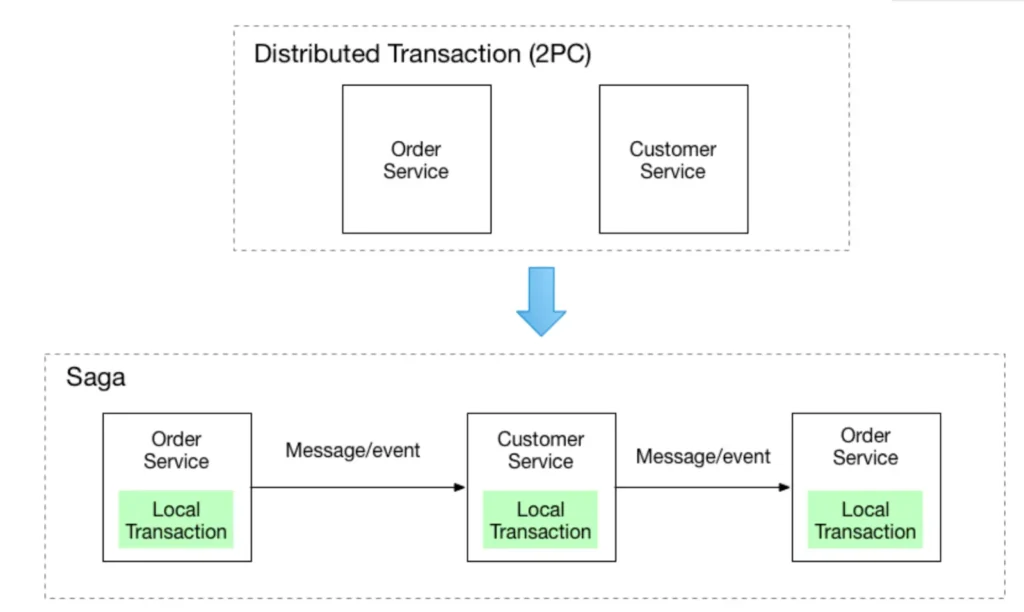
8. Tight coupling
Tight coupling, a main theme throughout many of the other anti-patterns discussed, occurs when services are highly dependent. This results in difficulty changing individual services (monolith in microservices) or deploying them independently (modular monolith). When used incorrectly or unintentionally, this can decrease the flexibility and scalability we usually experience as core benefits of implementing microservices.
Identifying and mitigating dependencies
- Analyze service interactions: Map out the communication patterns between services to identify potential areas of tight coupling.
- Favor asynchronous communication: Use message queues or event-driven architectures to reduce dependencies.
- API gateways: Introduce an API gateway to abstract internal service interactions and reduce direct dependencies.
- Contract-driven development: Define clear contracts for service interactions to promote loose coupling.
9. Lack of observability
In an ideal world, everything works flawlessly without the need for debugging or performance tracing. However, in reality, software development and architecture often require adjustments and optimizations from the very outset. Observability refers to the ability to understand the internal state of a system by examining its external outputs. Observability is crucial for monitoring, troubleshooting, and understanding complex service interactions In a microservices architecture.
Importance of monitoring
- Early problem detection: Identify and address performance issues, errors, and anomalies before they impact users.
- Performance optimization: Gain insights into service performance and identify bottlenecks.
- Root cause analysis: Trace issues across multiple services to understand their root cause. Beyond standard APM tools, architectural observability uncovers deep-seated issues in the architecture — circular dependencies, duplicate services, overly complex flows, resource exclusivity — that can severely impact speed and performance.
- Awareness of architectural drift: Understand your application’s current state and how far it is adhering or veering away from its target state. Products like vFunction use architectural observability to identify and manage architectural drift.
How to implement observability
- Centralized logging: Aggregate logs from all services into a central location for analysis.
- Distributed tracing: Track requests as they flow through the system to identify latency issues and dependencies.
- Metrics and monitoring: Collect key metrics (e.g., response times and error rates) to monitor service health and performance.
- Health checks: Implement health endpoints for each service to monitor their availability and responsiveness.
10. Ignoring human costs
While microservices offer technical advantages, they also introduce organizational and human challenges. Ignoring these human costs can lead to project delays, team conflicts, and decreased morale. To build an effective, full-scale microservices architecture, you need your team on the same page with collaborative planning and implementation of the microservices architecture. Without this, projects can quickly go off the rails.
Addressing team dynamics and project management
- Cross-functional teams: Organize teams around business capabilities, ensuring they have the necessary skills to develop and operate their services independently.
- Clear communication channels: Establish effective communication channels to facilitate collaboration between teams.
- Up-to-date microservices documentation. A real-time, accurate view of your architecture, service dependencies, and interactions ensures all team members are working with the most current information, reducing confusion, minimizing errors, and enhancing collaboration.
- Shared ownership: Encourage shared ownership and responsibility for the overall system.
- Continuous learning: Invest in training and development to equip teams with the skills to succeed in a microservices environment.
Strategies to avoid microservices anti-patterns
Avoiding microservices anti-patterns can be relatively easy when equipped with the right mindset and skills. Here are a few design and implementation pointers to keep you on the right track as you go ahead with planning and implementation:
Aligning services with domain-driven design
Domain-driven design (DDD) emphasizes understanding the business domain and modeling services around its core concepts. The result is cohesive services that are loosely coupled and aligned with the needs of the business. In practice, domain-driven design principles follow the path below:
- Identify bounded contexts: Decompose the domain into distinct bounded contexts, each representing a specific area of responsibility.
- Define aggregates: Group related entities into aggregates to ensure data consistency and simplify data management.
- Use ubiquitous language: Establish a shared vocabulary between developers and domain experts to ensure clear communication and understanding.
Enabling architecture governance
Architecture governance helps prevent microservices anti-patterns by providing clear guidelines and enforceable rules for design and implementation. It ensures that teams develop within established standards, promoting consistency across services and reducing the risk of unnecessary complexity. vFunction incorporates architecture governance into its platform, allowing teams to:
- Monitor and receive alerts about their distributed architecture to ensure all services are calling authorized servers,
- Enforce boundaries between particular services
- Maintain correct database-to-microservice relationships.
Implementing API gateways
API gateways are a must-have for an organization implementing microservices. API gateways are a single entry point for clients to access your microservices. They can help in many areas, including enhancing security and reducing the complexity of client-service interactions. Here are some key benefits:
- Centralized access: All client traffic is proxied through the gateway versus having clients interact directly with each service.
- Routing and load balancing: The gateway routes requests to the appropriate services and can distribute traffic to keep services running optimally.
- Security and authentication: Implement security policies and authentication at the gateway level, abstracting this from the services themselves.
Enabling asynchronous communication
Asynchronous communication is vital for decoupling microservices and preventing tight coupling. Although there are quite a few ways to accomplish this, there are two main ways to go about this when it comes to microservices that improve scalability and fault tolerance as well as loose coupling:
- Message queues: Services publish messages to queues, and other services consume them asynchronously.
- Event-driven architecture: Services publish events when their state changes; other services can subscribe to these events and react accordingly.
Encouraging regular refactoring and reviews
Microservices often change quickly, especially at first. To keep the code clean and ensure the services work well together, it’s important to regularly refactor and review the code. This approach helps teams maintain quality, manage technical debt, and avoid bad practices by focusing on two key practices.
- Refactoring: Restructure code to improve its design, readability, and maintainability without changing external behavior.
- Code reviews: Conduct peer reviews to identify potential issues, ensure code consistency, and share knowledge among team members.
Tools and frameworks to support microservices best practices
A wide range of tools and frameworks can be leveraged to build and manage microservices. Sometimes, the sheer amount of tools and frameworks available is overwhelming. The best of the bunch generally promote best practices and help avoid or fix common anti-patterns. Here are some key categories and popular examples of tools within each category:
Containerization and orchestration
- Docker: A platform for packaging, distributing, and running applications in containers, providing isolation and portability.
- Kubernetes: A powerful container orchestration system often coupled with Docker that automates containerized application deployment, scaling, and management.
API gateways and service mesh
- Kong: An open-source API gateway (also with an enterprise and hybrid cloud flavor as well) that provides routing, authentication, and rate limiting for microservices.
- Tyk: Another popular open-source API gateway (also with a cloud and enterprise variant) with features like request transformation and built-in analytics.
- Istio: One of the most popular service mesh platforms that provides traffic management, security, and observability for microservices.
Messaging and event streaming
- Kafka: An open-source distributed streaming platform for building real-time data pipelines and streaming applications. You can run the open-source variant on your infrastructure or choose from a variety of Kafka-based cloud services, such as Confluent Cloud.
- RabbitMQ: Another popular open-source message broker that supports various messaging protocols and patterns.
Monitoring and observability
- Prometheus: An open-source monitoring system that collects metrics from your services and provides alerting capabilities.
- Grafana: A visualization tool that allows you to create dashboards and visualize metrics from various sources, including Prometheus.
- vFunction: An architectural observability platform that can help visualize and manage microservices architecture and governance.
Microservices Frameworks and libraries
- Spring Boot: A popular Java framework for building microservices with features like auto-configuration and embedded servers.
- Node.js with Express: A lightweight and efficient framework for building microservices in JavaScript.
- Python with Flask or Django: Popular frameworks for developing microservices in Python.
Architecture governance
Architecture governance is key in enforcing microservices best practices by setting clear standards for design, development, and deployment. It ensures services are autonomously developed yet remain coherent within the system, adhering to security, data management, and communication protocols.
- Kubernetes: Although primarily a container orchestration tool, Kubernetes manages service discovery, scaling, load balancing, and self-healing, ensuring that microservices’ deployment and runtime behaviors align with architectural standards.
- vFunction: vFunction enables teams to set and enforce architecture rules, including service and resource dependencies, patterns, and standards. With real-time alerts for rule violations, it helps keep services and development with architectural best practices.
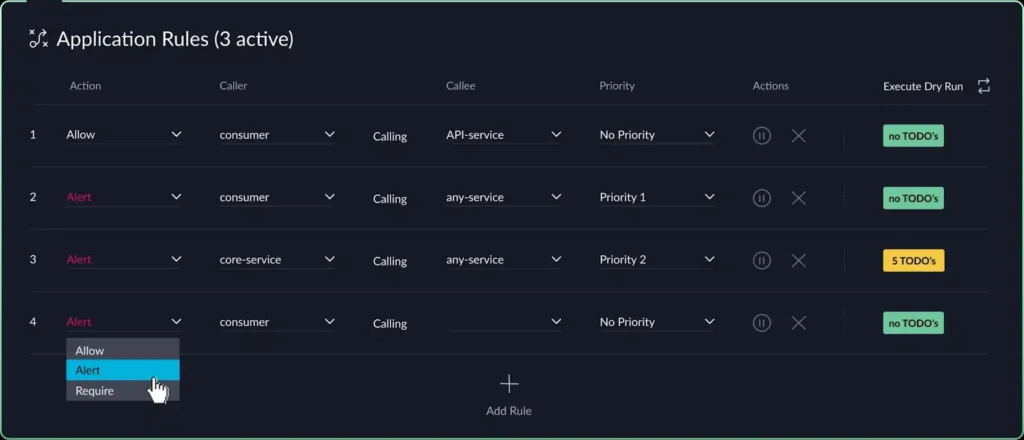
Although not an exhaustive list, these technologies form the core of many microservices implementations. By adding these tried and tested frameworks and tools to your stack, you can be confident in building a sturdy foundation for your microservices and avoiding common anti-patterns.
Real-life examples of avoiding microservices anti-patterns
Understanding microservices anti-patterns is crucial, but learning from real-world cases provides actionable insights for implementing them in your organization without falling into common pitfalls. Here are a few examples:

Capital One
Capital One, a leading financial corporation, has been at the forefront of adopting microservices to transform its IT infrastructure. This shift has enabled faster application development, improved scalability, and enhanced customer experience across its digital banking services. Their implementation focuses on building resilient systems that avoid anti-patterns in their design systems to absorb fluctuations in demand and simplify the management of their extensive financial offerings.

Metlife
MetLife is elevating its IT infrastructure by prioritizing the recruitment of experts in microservices architecture, specifically those passionate about steering clear of common anti-patterns. This strategy ensures their transition to a more flexible and scalable IT environment benefits from seasoned professionals keen on maintaining system integrity and optimizing performance. By focusing on hiring individuals committed to best practices in microservices, MetLife aims to enhance service efficiency and personalize customer experiences in the competitive insurance sector.

Etsy
Etsy, another of the most popular platforms on the internet, needed to migrate from its original monolithic architecture to microservices while maintaining high performance and reliability for its e-commerce platform. To this end, Etsy adopted a gradual migration strategy, starting with smaller, less critical services and gradually decomposing its monolith. It also focused on automation and continuous integration/delivery (CI/CD) to ensure smooth deployment and keep microservice coupling to a minimum.

Turo
Turo, the world’s largest car-sharing marketplace, embarked on a journey to scale their operations by shifting from a monolithic architecture to microservices, responding to the challenges posed by their rapid growth and the limitations of their existing application. By leveraging vFunction’s architectural observability platform, they were able to visualize and analyze their software architecture, enabling a strategic extraction of microservices that addressed latency issues and improved engineering velocity. This transition resulted in significant performance enhancements, including faster response times and more efficient code deployment, effectively avoiding common microservices anti-patterns and ensuring scalability and resilience.
Final thoughts: Building microservices and how vFunction can help
Though many tools and techniques can help address common microservices anti-patterns, establishing a strong foundation of architecture governance from the outset is one of the most effective ways to prevent them.” vFunction’s architectural observability platform provides deep visibility across customers’ microservices, helping to identify architectural drift and emerging issues. It also enables architecture governance, ensuring development stays aligned with established standards and guidelines—preventing disruptive anti-patterns before they take hold. Actively promoting best practices enhances application health, boosts developer productivity, and ensures faster, more dependable releases.
Microservices present a compelling option for application architecture, yet they are not without complexities. By comprehensively grasping and sidestepping the anti-patterns highlighted in this blog post, you can lay the groundwork for a scalable and maintainable microservices infrastructure. Remember these essentials:
- Plan carefully: Don’t rush into microservices without understanding your needs and a well-defined strategy.
- Define clear service boundaries: Align services with business capabilities and ensure they have a single responsibility.
- Embrace loose coupling: Favor asynchronous communication and avoid tight dependencies between services.
- Prioritize observability: Implement different types of observability, including architectural observability, to gain insights into your system’s health, performance, and architecture.
- Invest in the right tools and technologies: Leverage tools and frameworks that support microservices best practices and automation.
- Foster a culture of continuous improvement: Encourage regular refactoring, code reviews, and knowledge sharing to maintain code quality and prevent anti-patterns.
Successfully building microservices requires combining technical expertise and organizational alignment, as well as a significant mindset shift for those moving from monoliths. Adhere to these core principles and establish robust architecture governance as you progress.
Ready to keep your microservices architecture on track? Contact us to learn more about how vFunction’s architectural observability platform helps avoid anti-patterns by supporting governance, identifying drift and dependencies, and providing real-time documentation to help teams stay aligned with the current state of their architecture.

